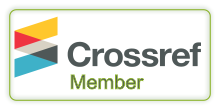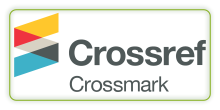EVALUATION OF ORAL TOXICOLOGICAL INVESTIGATION OF A HERBAL COMPOSITE (HERBODIL®) IN EXPERIMENTAL ANIMALS
DOI:
https://doi.org/10.29121/jahim.v3.i1.2023.27Keywords:
Acute Oral Toxicity, 28 day Sub Acute Toxicity, Herbal Fomulation, Haematology, Liver Function TestAbstract [English]
Purpose: The aim of the investigation was to find out the degree of toxicity of the herbal composite for humans, animals, or the environment. Acute and 28 days repeated sub-acute oral toxicity study of herbal composite (Herbodil®) carried out as per the current OECD guidelines.
Materials and Methods: 2000mg/kg of the herbal composite was orally administered to the animals to find out the acute toxicity. The treated animals were observed for toxic signs at thirty min, one, two and four hours and thereafter once a day for the next 14 days. In sub-acute study i.e.,28 days repeated dose oral study, the mice were segregated into four groups (two set for each sex) of six mice each. Group-1 mice served as a control (untreated). Group II mice consumed lower dose of herbal composite i.e., 100 mg/kg, Group III mice consumed middle/moderate dose i.e., 200 mg/kg and Group IV mice received high dose of 400 mg/kg (orally) once daily for 28 days respectively.
Results: This experimental in vivo study confirm that neither the acute toxicity study of herbal composite at the dose level of 2000mg/kg nor the sub-acute 28 days oral toxicity study developed any toxic signs, behavioural changes, or mortality during the whole study. Haematological and biochemical parameters dose not changes during the sub-acute study. Relative body weight of the mice also not change after the study.
Conclusion: Experimental results obtained from the current investigation suggest that LD50 of developed herbal composite was >2000 mg /kg and the herbal composite is completely safe and non-toxic for therapy.
References
Aneela, S. De Somnath, K.K. Lakshmi, N.S.K. Choudhury, S.L. Das, K.V. (2011). Sagar, Acute Oral Toxicity Studies of Pongamia Pinnata and Annona Squamosa on Albino Wister Rats. International Journal of Research in Pharmacy and Chemistry, 1(4), 820-824.
Asira, T. Shariq, S. Roohi, Z. (2014). Acute Toxicity Study of a Polyherbal Unani Formulation Habbe Shifa in Experimental Animal Model. Indian Journal of Traditional Knowledge, 13(1), 171-174.
Ayyanar, M. Subash, B.P. (2012). Syzygium Cumini (L.) Skeels : A Review of its Phytochemical Constituents and Traditional Uses. Asian Pac J Trop Biomed, 2(3), 240-246. https://doi.org/10.1016/S2221-1691(12)60050-1.
Chitme, H.R. Ramesh, C. Sadhna, K. (2004). Study of Antidiarrhoeal Activity of Calatropsis Gigantean Inexp Erimental Animals. J Pharmacol Pharm Sci, 7(1), 70-75.
Darbar, S. Bhattacharya, A. Chakraborty, M.R. Chattopadhyay, S.P. (2010). Livina, A Polyherbal Preparation Protects Liver Against Aceclofenac-Induced Hepatic Insult in Sprague-Dawley Rats : A Comparison with Silymarin. Pharmacology online, 2, 889-907.
Darbar, S. Chattopadhyay, S.P. (2018). Single Dose Acute Oral Toxicity of Livina, a Polyherbal Formulation in Mice Model. European Journal of Pharmaceutical and Medical Research, 5(2), 492-495.
Darbar, S. D., Saha, S., Chattopadhyay, S., & Chattapadhyay, A. (2020). Anti-Stress Activity (in-vivo) of Multi Herbal Capsule-Trasina® in Experimental Murine Model. Asian Journal of Pharmaceutical Research and Development, 8(5), 52-58. https://doi.org/https://doi.org/10.22270/ajprd.v8i5.839.
Darbar, S. Saha, S. Pramanik, K. Chattopadhyay, A. (2000). Preliminary Assessment of Acute and 28-Day Repeated Dose Oral Toxicity of a Newly Developed Herbal Mixture on Experimental Animal. Indian Journal of Pharmaceutical education and Research, 54(1),135-142. https://doi.org/10.5530/ijper.54.1.16.
Darbar, S. Saha, S. Pramanik, K. Chattopadhyay, A. (2018). Preliminary Acute Oral Toxicity Study of a Newly Developed Herbal Formulation. World J Pharm Res, 7(5), 924-930.
Darbar, S. Saha, S. Pramanik, K. Chattopadhyay, A. (2019). Toxicological Assessment of Silver Nanoparticles Synthesized through Green Route using Andrographis paniculata. Journal of Nanoscience and Technology, 5(1), 619-621. https://doi.org/10.30799/jnst.175.19050111.
Darbar, S. Saha, S. Pramanik, K. Chattopadhyay, A. (2021). Antioxidant and Immunomodulatory Effect of Akss16-Liv01-A Multi Herbal Formulation Against Ethanol Induced Liver Dysfunction in Mice. Clinical Phytoscience, 7(1),1-20. https://doi.org/10.1186/s40816-021-00312-1.
Darbar, S. Saha, S. Pramanik, K. Chattopadhyay, A. (2022). Haematological Modulations by Fixed Dose Combination (FDC) of Tramadol Hydrochloride/Paracetamol (THP). Frontiers in Clinical Drug Research-Hematology, 5, 154. https://doi.org/10.2174/9789815039535122050007.
Darbar, S., Chakraborty, M. R., Chattarjee, S., & Ghosh, B. (2009). Protective Effect of Livina, A Polyherbal Liquid Formulation Against Ethanol Induced Liver Damage in Rats. Ancient science of life, 28(3), 14–17.
Darbar, S., Saha, S., & Chatopadhyay, A. (2021). Ethanol Intoxicated Hepatic Oxidative Stress Mitigated by Poly-Herbal Formulation – Trasina® in Murine Model. Innoriginal : International Journal of Sciences, 8(3).
Dhankhar, S. Ruhil, S. Balhara, M. Dhankhar, S. Chhillar, A. (2011). Aegle Marmelos (Linn.) Correa : A Potential Source of Phytomedicine. J Med Plant Res, 5(9), 1497-1507.
Mir, A.H. Sexena, M. Malla, M. Y. (2013). An Acute Oral Toxicity Study of Methanolic Extract from Tridex Procumbens in Sprague Dawley's Rats as Per Oecd Guidelines. An Acute Oral Toxicity Study of Methanolic Extract from Tridex Procumbens in Sprague Dawley's Rats as Per Oecd Guidelines, 3(1), 16- 20.
Ramdas, B. P. Santosh, N. B. Sangameswaran, B. Popat, B. M. Shantaram, G. K. Vinayak, K. D. (2020). Assessment of Acute and 28-Day Sub-Acute Oral Toxicity of a Polyherbal Formulation in Rats. Int J Pharmacogn Chinese Med, 4(1), 1-7. https://doi.org/10.23880/ipcm-16000200.
Rickert, K., Martinez, R. R., & Martinez, T. T. (1999). Pharmacist Knowledge of Common Herbal Preparations. Proceedings of the Western Pharmacology Society, 42, 1–2.






























